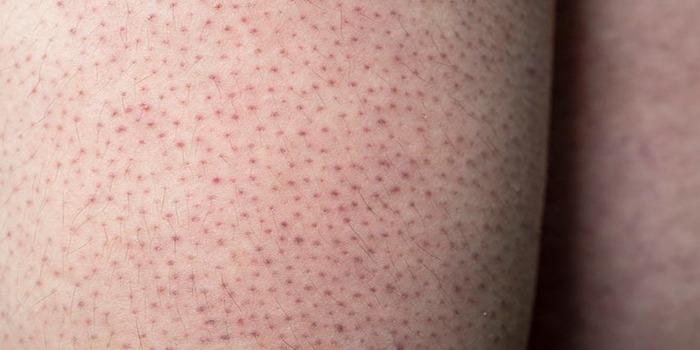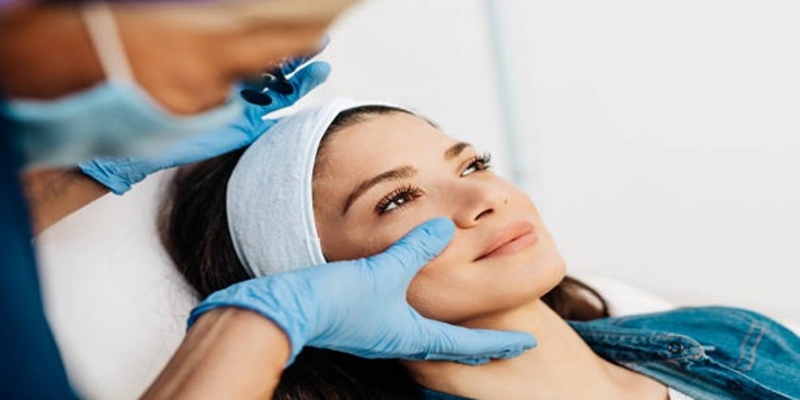KP is a harmless skin disorder marked by small, rough bumps that resemble everlasting goosebumps. These bumps usually form around hair follicles and appear on the upper outer arms and thighs. Although not contagious, kP occurs in families and is frequently linked with severely dry skin or eczema.
Symptoms typically appear throughout adolescence and might persist until adulthood, though most people outgrow them by the age of 30. The sickness is known to change with the seasons, often improving in the summer and worse in the winter due to humidity swings.
If you are self-conscious about the bumpy skin or find itchy this time of year, you must know about what on Earth is Keratosis Pilaris and how to reduce its appearance. Let’s start!
What is Keratosis Pilaris?

It appears like the goosebumps are permanent. "In layman's terms, keratosis pilaris is a benign skin disorder when your skin cells accumulate around the hair follicles; because the cells do not exfoliate regularly, these pimples usually form on the upper outer arms or thighs. it is a chronic, inherited skin disorder that affects some people more than others.
Those who are predisposed to it frequently have extremely dry skin or eczema. It tends to worsen around puberty, and most people outgrow it by the age of 30. I'm 29 years old, and my bumps aren't going anywhere in the coming months.
Keratosis Pilaris And Its Causes

Dermatologists refer to "pistons" as hair follicle apertures that are blocked. When several pistons clump together in a single place, the skin becomes rough and uneven. The consequence is a tiny lump. The cause of keratin buildup is uncertain.
It is thought that there is an inherited tendency. However, keratosis pilaris is not transmissible. Women are most likely to be affected by the illness. Hormonal changes might exacerbate symptoms during pregnancy. For unknown causes, the condition appears to improve in the summer while deteriorating in the winter.
Furthermore, the condition begins in childhood and worsens during adolescence, affecting more than half of all teenagers. Anyone can be sensitive to the situation. It is more common in the second decade of life, but it improves and is frequently surpassed by the age of thirty. However, some persons in their 40s continue to experience keratosis pilaris.
What Can You Do To Improve The Appearance Of Your Skin
The Primary Rule of KP Is To Not Pick At Your KP
While it's tempting to treat KP lumps like a juicy pimple, It is against picking at flare-ups. Bursting acne can also lead to tragedy, but we're just human. Picking leads to scarring and can eventually lead to hyperpigmentation.
It warns against overdrying your skin: Minimize soap on the affected area as that can be harsh on the skin, avoid hot showers, and moisturize damp skin immediately after the shower.
The Next Rule Is To Exfoliate

KP is a genetic disorder hence, there is no cure. But there are techniques to manage the flare-ups and soothe your skin, making the spots seem less severe. Exfoliation is the key to managing pimples; however, chemical exfoliants should be used rather than physical ones.
Look for treatments that will break down the skin's superficial barrier.
That means loading up on acids and other treatments that will help your skin exfoliate properly and break down the skin-cell lumps that have formed around your hair follicles. Prefers lactic acid, urea, salicylic acid, and retinoids.
As a bonus, all of the exfoliation will help prevent ingrown hairs. It is possible to exfoliate too much; you will notice when your skin becomes red and inflamed. That's why it's recommended to start cautiously and with only one acid at a time.
Moisture Is Your New Best Buddy
Because people with KP have dry skin, and retinol and acids exacerbate the dryness, it's critical to battle it with lots of hydration. Contrary to popular assumption, moisturizers do not actively hydrate your skin; instead, they lock in existing moisture. (Exfoliating before using a moisturizer might help your product penetrate the skin better; luckily, you're already doing so!) Drinking enough water is always beneficial, as are the heavy-duty moisturizers that some may refer to as "winter" creams; I have no concept of seasons, so these are my year-round go-tos.
While some people swear that eliminating certain food groups, such as gluten or dairy, will help prevent skin inflammation, there isn't enough research to back up this claim just yet. Doctors do point out, however, that persons with eczema can be more sensitive to particular foods, so keeping a diet diary may be beneficial. So, if you enjoy the taste of oat milk lattes, keep ordering them and prepare to receive some major acid on your face.
Keratosis Pilaris Treatment
The majority of the choices include home care measures, mainly lotions that soften the deposited keratin in the skin and keep it from drying out further. Avoid using harsh cleaners that can irritate the skin. Hydration is necessary after cleansing.
The general guideline is that skin should not be dry; thus, it needs regular hydration throughout the day. Additionally, some prescription topical treatments can remove dead skin cells.
Take a short shower, either cool or warm, to help relax your pores.
Gently touching the skin can help remove minor bumps, but keep your bath time to a minimum because too much time can destroy natural oils from the skin. Use moderate, unscented soaps and bath products. Avoid vigorous rubbing of the skin, as this might aggravate the problem; do not take hot showers or scratch your skin.
Conclusion
So, what on Earth is Keratosis Pilaris? In short, KP is a common skin ailment that results in tiny, rough bumps on the arms and legs. Gentle care, such as no plucking, chemical exfoliants, or thorough moisturizing, is used to manage rather than cure. Although it is not hazardous, it can have an impact on a person's self-worth. Understanding KP enables effective, soothing skin care practices that improve appearance and comfort.








